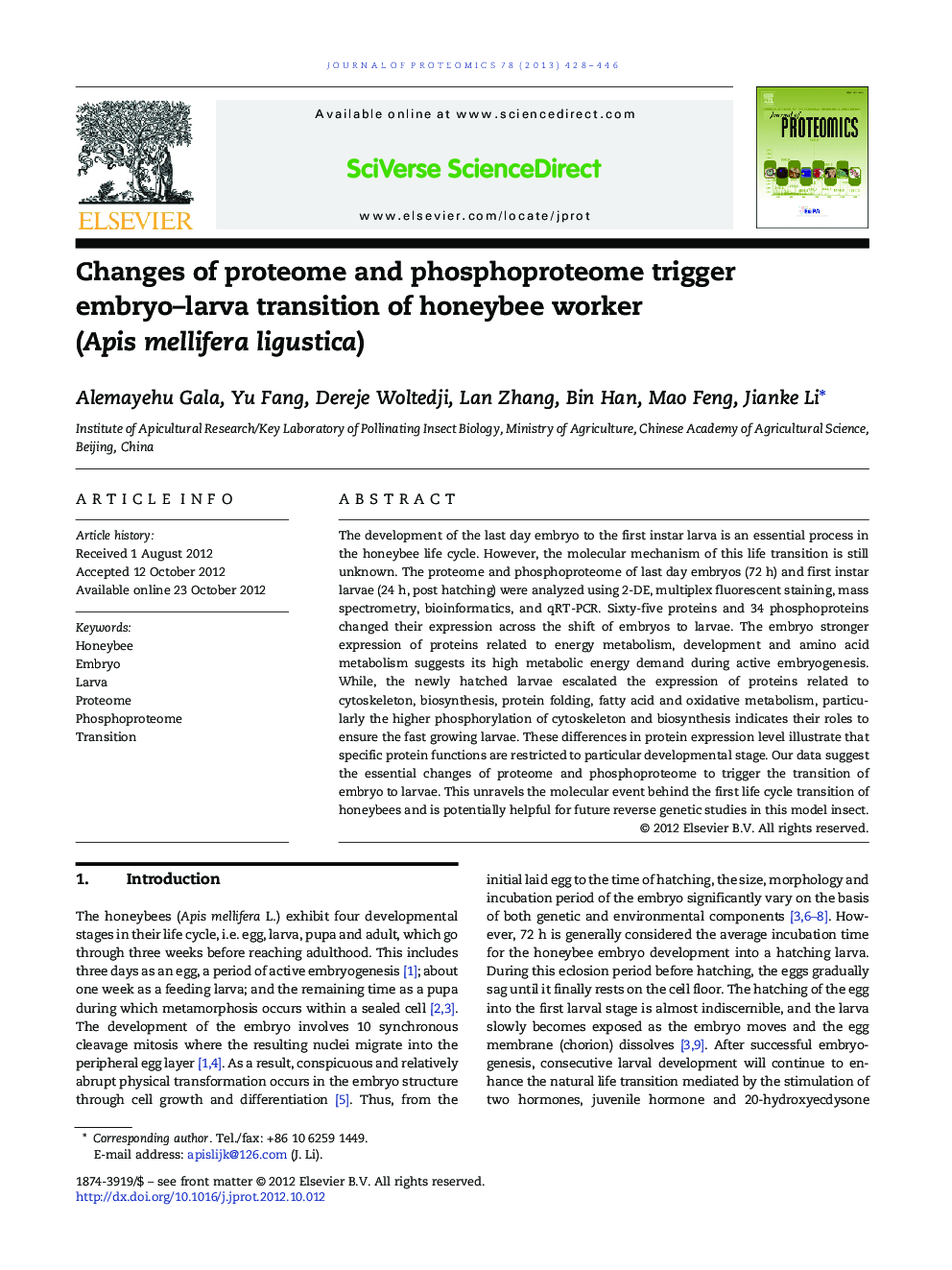| Article ID | Journal | Published Year | Pages | File Type |
|---|---|---|---|---|
| 1225595 | Journal of Proteomics | 2013 | 19 Pages |
The development of the last day embryo to the first instar larva is an essential process in the honeybee life cycle. However, the molecular mechanism of this life transition is still unknown. The proteome and phosphoproteome of last day embryos (72 h) and first instar larvae (24 h, post hatching) were analyzed using 2-DE, multiplex fluorescent staining, mass spectrometry, bioinformatics, and qRT-PCR. Sixty-five proteins and 34 phosphoproteins changed their expression across the shift of embryos to larvae. The embryo stronger expression of proteins related to energy metabolism, development and amino acid metabolism suggests its high metabolic energy demand during active embryogenesis. While, the newly hatched larvae escalated the expression of proteins related to cytoskeleton, biosynthesis, protein folding, fatty acid and oxidative metabolism, particularly the higher phosphorylation of cytoskeleton and biosynthesis indicates their roles to ensure the fast growing larvae. These differences in protein expression level illustrate that specific protein functions are restricted to particular developmental stage. Our data suggest the essential changes of proteome and phosphoproteome to trigger the transition of embryo to larvae. This unravels the molecular event behind the first life cycle transition of honeybees and is potentially helpful for future reverse genetic studies in this model insect.
Graphical abstractFigure optionsDownload full-size imageDownload high-quality image (155 K)Download as PowerPoint slideHighlights► Protein and phosphoprotein changes trigger the transition of embryo–larva. ► The embryo considerably upregulated proteins involved in high metabolic activities. ► Cytoskeletal and protein biosynthesis proteins exhibited more differential phosphorylation in the larvae. ► The results gain in-depth knowledge of honeybee biology and molecular genetics.
